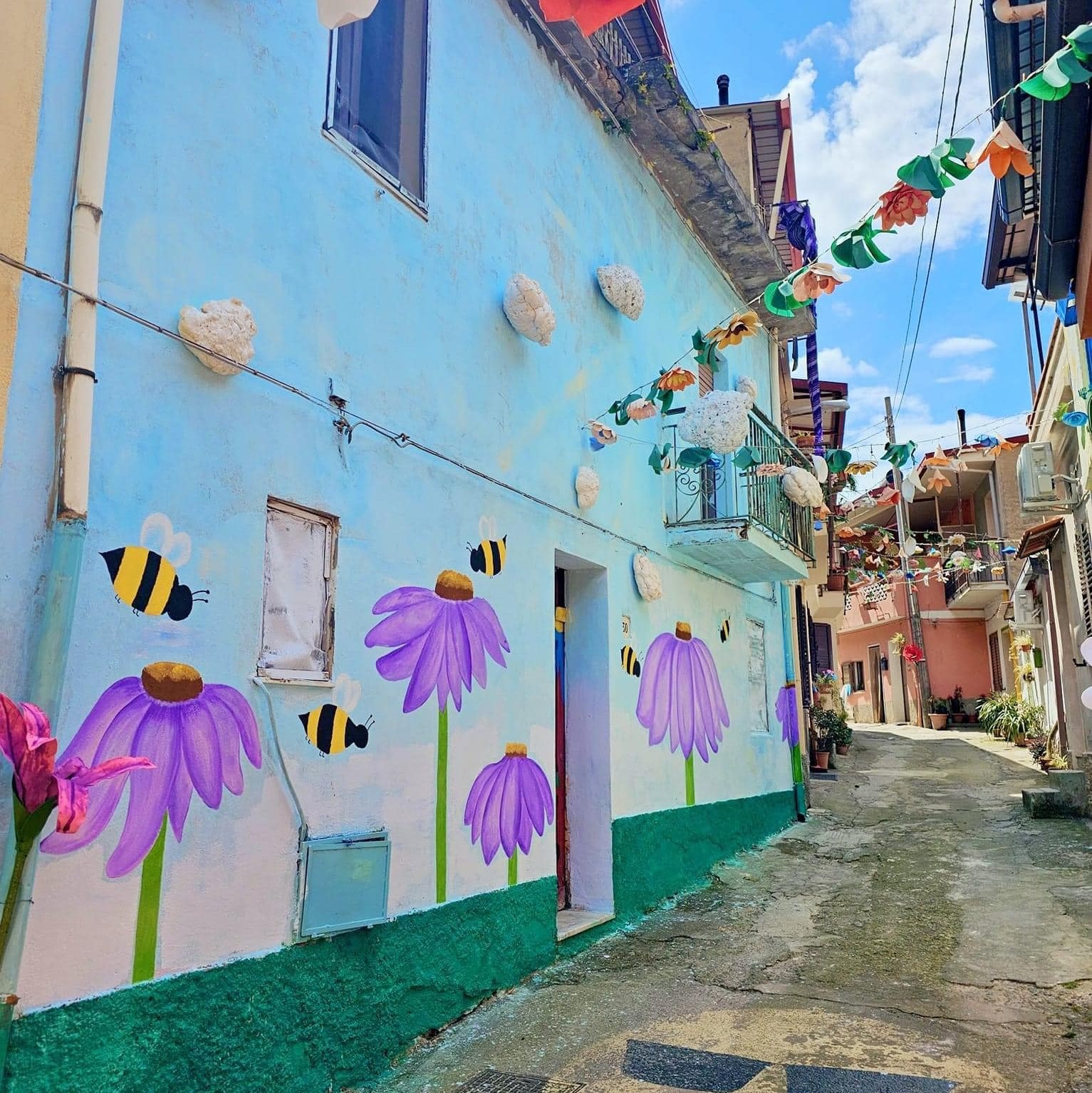A day among the colours of Borgo Croce
Come discover Borgo Croce (Reggio Calabria) and its lively murals

Art and Culture
https://www.facebook.com/profile.php?id=100084683874599
Among the places that have managed to regenerate themselves in Calabria through street art is certainly Borgo Croce.
Its characteristic and colourful views are among the most ‘’instagrammed‘’ of the moment, so much so that this small hamlet in the municipality of Fiumara, in the province of Reggio Calabria, has gone from depopulation to being a destination for tourists armed with curiosity and a camera.
Let's discover together Borgo Croce, murals and all there is to see in the surrounding area...
The murals of Borgo Croce
We reach Borgo Croce (or simply Croce) following the signs for Fiumara, the municipal territory of which this small hamlet is part.
Awaiting us is a tiny hamlet, populated by only 45 inhabitants (including 2 children) and the guide, Mariagrazia Chirico, who was the first to take the initiative of bringing this area back to life through an artistic project: the murals of Borgo Croce.
An idea that in recent years has taken hold in many abandoned villages in Calabria, from Diamante (CS, one of the forerunners of this regenerative practice) to Petilia Policastro (KR), via Sant'Agata del Bianco (RC), a village near Borgo Croce that has paid homage to the writer Saverio Strati, its illustrious son, through murals.
The Borgo Croce case began as a "summer game", played with tourists and passing visitors, and then continued and confirmed itself as a year-round attraction. How do you turn a semi-populated village into a popular street art museum? Simply put brushes and colours in the hands of simple citizens who wish to tell something about themselves and their territory, create a "symbolic signpost" showing the places where the emigrants live, embellish the views and paint the facades of old houses with proverbs, traditional mottos and song lyrics.

The result? Visitors start arriving, snooping around, interacting with those who have stayed behind and discovering all the gems of Borgo Croce on their own: murals, a small refreshment stall, the ever-present ‘’Kiss Alley‘’ with its swing, the staircase-sitting room (furnished with sofas, cushions and armchairs) leading up to the church, and everything else needed to make an abandoned village "instagrammable".
The second life of the Borgo Croce community therefore passes through active citizenship, which in "muralism 2.0" has found the resources to keep its history and places of origin alive, reinventing them... in colour!
Borgo Croce (Reggio Calabria) and surroundings
Borgo Croce, Reggio Calabria and the neighbouring villages are part of a small itinerary to be discovered on an out-of-town trip or an entire weekend, depending on one's interests.
Let's start with a walk through the centre of Fiumara, visiting the Church of S. Maria del Carmine, Palazzo dei Catalani, the ruins of the Ruffo Castle, immersed in a semi-rural district, and the former Capuchin Convent. The late singer-songwriter Mino Reitano was originally from the hamlet of San Pietro, to whom the "Mino Reitano" Museum and the square near his birthplace are dedicated.
Following the course of the Fiumara di Catona (from which the town takes its name), on both banks one can admire the remains of the ancient mills and wash-houses that fed the agro-pastoral economy of this area, a true identity trait of the community.
We are at the foot of the Aspromonte massif, so a nice nature excursion through the woods of the Aspromonte National Park is the right "art-nature" combination.

Going up from Borgo Croce, for instance, one can easily reach the rocky site of the Tremusa Caves, an extremely suggestive place where the hand of nature has much to teach man:
A geological testimony of millions of years ago, these mysterious caves are linked to the legend of the "Three Muses" (as the name suggests), perhaps referable to the partica of ancient pagan cults. The Tremusa Caves are geologically active and within them one can observe the phenomenon of water drops that cause stalactites and stalagmites to grow, making them resemble the spires of a Gothic cathedral.
https://calabriastraordinaria.it/en/news/a-day-among-the-colours-of-borgo-croce


